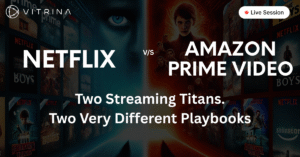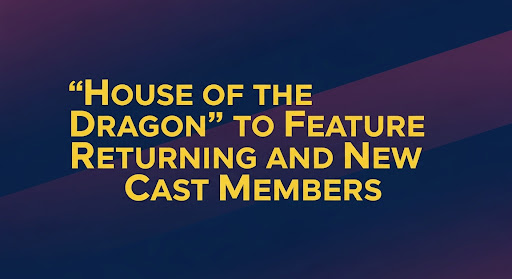Global media technology leader NEP Group has recently launched its first large-scale IP-based OB trucks in the Middle East. In an exclusive conversation with Vijaya Cherian, senior executives emphasize how these innovative vehicles, driven by NEP’s advanced broadcast platform, are poised to transform the region’s content production landscape.
With a rich history in live production, NEP has been the backbone of broadcast infrastructure for some of the world’s most prestigious events, including the Olympics, the World Cup, and the Indian Premier League (IPL). NEP operates the largest OB fleet in the industry, boasting over 150 OB vehicles that support sports, entertainment, news, and other major productions across the Americas, Europe, and Australia. This February, NEP made a significant mark by introducing its first large-scale OB vehicle in the Middle East—the ME-01 OB truck—during UFC Fight Night: Whittaker vs. Aliskerov, marking the first UFC event ever held in Saudi Arabia.
“Utilizing the new ME-01 OB unit for UFC Saudi Arabia significantly enhanced our production capabilities, delivering the same high-level innovation and engineering we expect from NEP globally. Now, that level of excellence is available locally in one of the fastest-growing production markets worldwide,” states Greg Louw, Director of Technical Operations for the UFC. Following its debut, ME-01 supported the production of the Saudi Cup and Power Slap 11 championships in Riyadh, as well as the 2025 EuroLeague Final Four event in Abu Dhabi.
The launch of ME-01 was complemented by the introduction of ME-02, NEP’s second cutting-edge IP unit for the region, showcased at CABSAT 2025. While these trucks are tailored for the Middle East, their development involved extensive collaboration among NEP teams across Australia, Europe, and the Middle East.
“For NEP, these trucks represent a true labor of love. Our CTOs from three continents contributed years of operational insights to elevate ME-01 and ME-02 into exemplars of NEP’s next-generation OB fleet,” explains Marc Segar, Chief Technology Officer for NEP Australia, New Zealand, and Japan, who spearheaded the project. “This spirit of collaboration is what makes these OBs truly remarkable.”
According to Louw, NEP’s expansion into the region signifies a crucial milestone in content production. “The Middle East is solidifying its position as a premier hub for global media projects. With two fully IP-based broadcast facilities now operational here, powered by NEP’s TFC platform, it’s a game-changer for the region’s production community.”
Fabrication commenced in March 2024 when NEP acquired two purpose-built OB coaches from Tomassini Style in Perugia, Italy. “The trucks underwent a complete redesign to cater to the Middle East market,” Segar explains. “Environmental adaptations were also made—air conditioning systems were upgraded to endure the region’s intense summers. Within six months, the trucks were transported to the Middle East and prepared for commissioning. Each truck measures 13.9m in length and can extend to 16.4m when fully deployed, offering over 70sqm of operational space and accommodating up to 30 production staff across six specialized zones: production gallery, replay, middle bench, audio, shading, and engineering.”
“Designed specifically for live sports, entertainment, and large-scale events,” notes Jean-Claude Rahme, CTO for NEP in the Middle East and Asia, “the trucks mirror each other in technical architecture. They are engineered for operational consistency and scalability based on production needs, representing the region’s first fully IP-native broadcast facilities.”
Both OB trucks utilize SMPTE ST 2110 broadcast facilities, with minimal baseband cabling except for the tailboard edges. Key hardware components have been supplied by Grass Valley, Cisco, Arkona, Manifold Technologies, EVS, and Lawo. Notable features include 30 LDX-150 camera chains, seven EVS XT-VIA servers, multi-format support, a Grass Valley K-frame with Kayenne panel, LAWO audio consoles, and an RTS intercom system. Importantly, ME-01 and ME-02 are format- and frame rate-agnostic.
TFC at the Helm
Beyond their advanced equipment, the twin units are powered by NEP’s TFC (Total Facility Control) broadcast orchestration platform, which facilitates seamless integration of hardware and software from various vendors into a single interface, simplifying control, automating tasks, and standardizing workflows.
“TFC has played a crucial role in simplifying the complexities of SMPTE ST 2110 and bringing the familiarity of baseband workflows into the IP realm,” says Segar. “It’s a powerful unifying platform that allows broadcasters to harness the full potential of IP without compromising usability or control.”
Interestingly, TFC was not initially part of a planned operational strategy. Instead, it emerged from the necessity to address daily operational challenges faced by the company’s engineering team. In 2018, NEP’s engineering team in Australia began working with SMPTE ST 2110. As early adopters of IP-based production, they encountered two significant challenges: while IP offered remarkable flexibility, there was a shortage of broadcast engineers with deep IP expertise, and a comprehensive control system was lacking to facilitate a smooth transition.
To tackle these issues, a dedicated team of NEP engineers began developing software to make IP workflows as intuitive and manageable as traditional baseband systems, enabling engineers familiar with baseband to confidently operate in an SMPTE ST 2110 environment without needing to become IP specialists.
“The early generation of ST 2110 hardware had its glitches,” Segar recalls. “Our engineers began writing their own code to resolve these issues and streamline workflows. This gradually evolved into a comprehensive control platform. Today, TFC powers all of NEP’s operations globally, from OBs to connected production facilities.”
NEP first deployed TFC as a managed service for Sky’s F1 coverage during the 2019 season, and it quickly became the standard platform across NEP’s broadcast facilities and OBs worldwide. Over the next six years, TFC’s capabilities expanded, emerging as the ideal solution for the challenges of implementing SMPTE ST 2110.
TFC’s flexibility is its unique selling proposition. Technology-agnostic, it allows broadcasters to transition from baseband to IP at their own pace by supporting hybrid environments. The platform requires no system upgrades and seamlessly adapts to existing infrastructure. This integration minimizes disruption and delivers numerous benefits—from cost efficiency and a reduced carbon footprint due to minimal hardware waste to enabling content producers to focus on creative output rather than technical system integration.
TFC is also vendor-agnostic, allowing broadcasters to integrate a diverse range of technologies within an IP-based broadcast environment. As a web-based platform, it offers a user-friendly touchscreen interface that enables operators, whether in an OB truck or a fixed facility, to easily manage and orchestrate all connected devices and systems, regardless of manufacturer. This platform is widely utilized across the US, Europe, Australia, and New Zealand, and is now available in the Middle East with the launch of ME-01 and ME-02 OBs. To date, TFC has been employed in over one million productions globally, including the Paris Olympics, the World Cup, the Super Bowl, the Masters, the PGA Tour, and Eurovision.
Building a Stronger Presence
Since the introduction of ME-01 and ME-02, four additional NEP trucks have been deployed in the region, three of which are 4K/HDR capable. Furthermore, NEP’s pool of internationally deployed flypacks is available for regional broadcasters and producers. Last month, NEP provided a comprehensive range of media services for the Arab League Summit held in Baghdad, marking NEP’s first production in Iraq, which included the provision of OB trucks and specialty cameras.
“Broadcasters, rights holders, and streamers are continuously expanding and enhancing their projects in the Middle East, reaching new audiences with exceptional live sports and entertainment content. We are here to support their productions with NEP’s global ecosystem of media services and solutions,” says Mohammad Hammoud, Chief Commercial Officer for NEP Middle East and Asia.
Similar to its OB fleet, NEP’s TFC platform has also broadened its global reach. Initially, the software was only available for productions where NEP served as the media services provider, supporting events that utilized the group’s OB units, centralized production facilities, cameras, and other infrastructure. However, other broadcasters, attracted by its advantages, began approaching NEP to integrate TFC into their own workflows. In response to this growing demand, NEP announced at the 2025 NAB Show that TFC would now be available industry-wide as a licensed software service.
Despite TFC’s ability to simplify complex broadcast systems, the challenge of finding qualified professionals remains critical. “The difficulty in locating staff with deep IP experience is not unique to NEP or this region; it’s a global industry-wide issue,” remarks Segar. “We have a successful engineer apprentice program at our global headquarters in Pittsburgh, a training academy in India, and an internship program in Singapore to cultivate a talent pipeline for the industry.”
NEP’s substantial investment in the Middle East underscores the region’s growing importance on the global media stage. With the integration of new technologies like TFC, ME-01, and ME-02 into local productions, the region’s media sector is on the brink of entering a new era of production.
Persons
Vijaya Cherian, Greg Louw, Marc Segar, Jean-Claude Rahme, Mohammad Hammoud, Gareth Jones
Company Names
NEP Group, Grass Valley, Cisco, Arkona, Manifold Technologies, EVS, Lawo
Titles
UFC Fight Night: Whittaker vs. Aliskerov, Saudi Cup, Power Slap 11, EuroLeague Final Four, Arab League Summit
Disclaimer: This article has been auto-generated from a syndicated RSS feed and has not been edited by Vitrina staff. It is provided solely for informational purposes on a non-commercial basis.

































